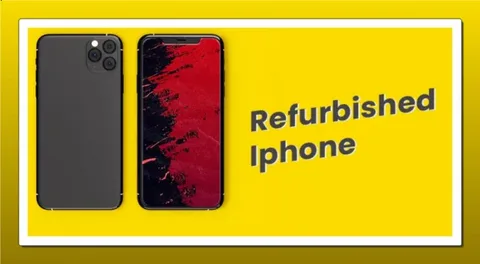Imagine spending months, even years, developing a software solution, only to realise that it doesn’t work as expected. Sounds frustrating, right? This is where a Proof of Concept (POC) comes in. It’s like a sneak peek into your software project’s potential before you dive into full-scale development.
But why is a POC so important? Simply put, it helps businesses determine whether an idea is viable before investing too much time, money, and resources. Think of it as testing the waters before committing to a full swim.
In this blog, we’ll break down what a Proof of Concept is, why it matters, and how to create one for your next software project. Whether you’re a startup founder, a business owner, or a tech enthusiast, this guide will help you understand how a POC can save you from costly mistakes.
What is a Proof of Concept (POC)?
A Proof of Concept (POC) is a small-scale version of your software project designed to test its feasibility. Unlike a full-fledged product, a POC focuses on proving whether an idea can work technically and functionally.
Let’s say you have a groundbreaking idea for an AI-powered task automation tool. Before you spend months developing the entire software, a POC allows you to test its core functionality. You build a small working model, see if it performs as expected, and determine whether the concept is viable.
What a POC is NOT:
- It’s not a prototype (which is a more refined version of the product).
- It’s not an MVP (Minimum Viable Product), which is a basic but usable version of the final product.
- It’s not a full product, just a small test to validate an idea.
Why is a POC Important in Software Development?
Think of a POC as a safety net. Instead of taking a blind leap into full development, a POC helps in:
✅ Reducing Risks – Identifies potential technical challenges before full development starts.
✅ Saving Costs – Prevents businesses from investing in projects that may fail.
✅ Attracting Investors – A working proof of concept can convince stakeholders that your idea is worth funding.
✅ Speeding Up Development – Helps refine the project’s core idea, avoiding unnecessary development.
✅ Improving Decision-Making – Offers valuable insights into whether an idea is worth pursuing.
How to Create a Proof of Concept for Your Software Project
Now that we understand what a POC is, let’s explore how to create one.
Step 1: Define the Problem
Before you start building anything, ask yourself one crucial question: What problem is my software trying to solve?
For example, if you’re developing a fleet management system, the problem might be:
“Logistics companies struggle with inefficient route planning, leading to increased costs and delays.”
Clearly defining the problem will help you focus on testing the right solution.
Step 2: Identify Core Features
A POC should focus only on the most essential feature of your software idea. You don’t need to test every single function—just the one that proves the concept works.
For instance, if you’re developing an AI-driven chatbot, your POC could focus on:
✅ Understanding user queries.
✅ Providing basic responses.
✅ Learning from interactions.
Skip the fancy UI and complex integrations. The goal is to validate the core idea.
Step 3: Develop a Basic Version
Here’s where things get exciting! It’s time to build a barebones version of your software to test its core functionality. This is usually done using:
- Simple coding scripts (e.g., Python, JavaScript).
- Open-source tools to speed up development.
- Third-party APIs to test integrations.
For example, if you’re testing an automated invoice generator, you could create a small script that generates invoices based on user inputs.
Step 4: Test and Gather Feedback
Once you have a working POC, test it with real users or stakeholders. Ask for feedback:
- Does it work as expected?
- Are there technical limitations?
- Does it solve the problem effectively?
Real-world testing can reveal hidden challenges that you might not have considered.
Step 5: Evaluate and Decide
At this stage, you’ll analyse the results and answer an important question:
Is this idea worth pursuing?
If your POC proves that the software concept works, you can confidently move towards building a prototype or MVP. If it fails, it’s a sign that adjustments are needed—or that the idea isn’t viable.
Real-Life Examples of Successful POCs
1. Dropbox
Before becoming a tech giant, Dropbox created a simple explainer video as a POC to test demand for its cloud storage idea. The video attracted thousands of sign-ups, proving that users wanted the service.
2. Airbnb
In its early days, Airbnb tested its idea by renting out their own apartment to see if people would pay to stay in someone’s home. This simple POC validated the concept before they built a full platform.
3. Tesla Autopilot
Tesla’s self-driving technology started as a POC using limited automation features. Only after successful testing did they expand the technology into a full-fledged Autopilot system.
Common Mistakes to Avoid When Creating a POC
🚫 Trying to Build a Full Product – A POC is just a test; don’t overcomplicate it.
🚫 Skipping User Feedback – Without real-world input, you might miss major flaws.
🚫 Ignoring Scalability – Even though it’s a small test, think about how it will scale.
🚫 Rushing the Process – A POC should be quick, but skipping important steps can lead to misleading results.
Conclusion
A Proof of Concept (POC) is a powerful tool in software development. It helps businesses test an idea, reduce risks, and avoid costly mistakes. Whether you’re building an AI-powered assistant, an e-commerce platform, or a logistics solution, a POC ensures that your investment is worthwhile.
If you’re planning to develop a custom software solution, working with a custom software development company in South Africa can help you create a well-structured POC and bring your vision to life.
FAQs
1. How is a POC different from an MVP?
A POC tests feasibility, while an MVP (Minimum Viable Product) is a basic version of the final product used to gain early adopters.
2. How long does it take to create a POC?
It depends on the complexity, but most POCs take a few weeks to a couple of months to develop and test.
3. Can a failed POC still be useful?
Absolutely! Even if a POC fails, it provides valuable insights that can help refine your idea or pivot to a better solution.
4. Do all software projects need a POC?
Not necessarily. If the idea is already proven and similar solutions exist, a POC might not be needed. But for new or innovative ideas, a POC is essential.
5. How do I present a POC to investors?
Create a simple demo, gather real-world feedback, and present clear data showing how the concept solves a problem. A strong POC increases investor confidence.











